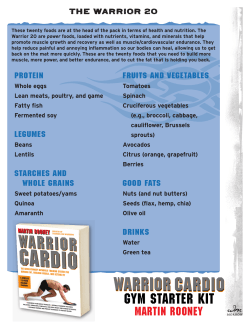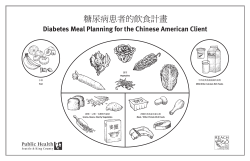
Healthy food choices make healthy families.
Healthy food choices make healthy families. The food you and your family eat each day affects your health for a lifetime. It will determine how you feel today, tomorrow and in the future. Using Food Stamps can help by putting healthier foods on your table, like fruits, vegetables and whole grains. Are you getting the full benefit of Food Stamps? Eat plenty of fruits, vegetables and whole grains daily. Get at least 30 minutes of physical activity every day. Check the Nutrition Facts label on packaging when you are shopping. Compare the amount of fat, sodium, sugar and calories. This can help you choose the foods that are best for you and your family. Eating healthy will help you feel more energetic. Well-nourished children do better in school. These steps can help maintain a healthy weight and reduce the risk of diet-related diseases like type 2 diabetes, heart disease, stroke, and some types of cancer. To learn more about the right amounts of healthy foods to serve your family every day, visit www.mypyramid.gov. This material is funded by USDA’s Food Stamp Program through the California Nutrition Network for Healthy, Active Families. This institution is an equal opportunity provider and employer. The Food Stamp Program provides nutrition assistance to people with low income. For information on the Food Stamp Program or for free nutrition education materials, please call 1-888-328-3483. BRO-163 _ 8/06 Food Stamps help put healthy food on your table. Healthy foods don’t have to cost more. Save money by planning your shopping before you go to the store. Make good use of leftovers, they can cut your cooking time and food costs. For example, prepare a beef stew, serve half of it and freeze the remaining half to use later. You can also freeze extra cooked meats and vegetables for soups or casseroles. Tips for planning Make a list of all the foods you need while you are in the kitchen so you can check what you have on hand. n Buy fresh fruits and vegetables in season. They cost less. n Stock up on frozen vegetables for quick and easy cooking. n Look for coupons in your newspaper for foods you plan to buy. Also check if other brands are on sale. n Prevent food waste. Plan your meals before you shop. Buy only the amount your family needs. n Tips for shopping Compare prices and try store brands. They usually cost less than name brands but have the same taste and nutritional value. n Take time to compare fresh, frozen and canned foods to see which is cheapest. n Look for bargains on day-old whole grain breads. Choose store brand whole grain cereals. n Buy regular rice and oatmeal instead of instant flavored types. Try using brown rice and whole grain tortillas to get more fiber. n Buy whole chickens and cut them into pieces. Be sure to cut off skin and extra fat. n Beans are rich in protein and fiber, without any fat. Buy them as a lowcost, nutritious alternative to meat. n Choose non-fat and low-fat milk for everyone over 2 years old. n If you have a large family, buy bulk foods or large bags of frozen fruits and vegetables. n
© Copyright 2025





















